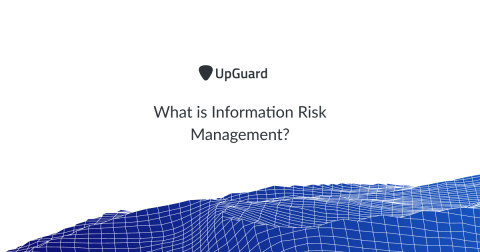What is Information Risk Management?
Information Risk Management (IRM) is a form of risk mitigation through policies, procedures, and technology that reduces the threat of cyber attacks from vulnerabilities and poor data security and from third-party vendors. Data breaches have massive, negative business impact and often arise from insufficiently protected data. In this article, we outline how you can think about and manage your cyber risk from an internal and external perspective.





